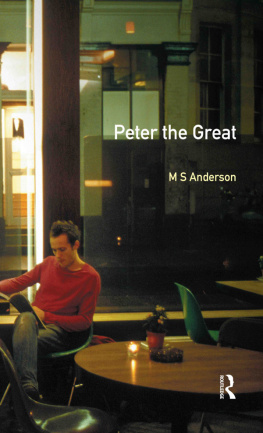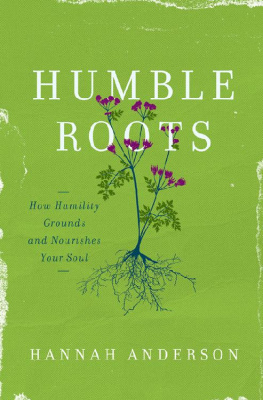Anderson Wes; Wes - Wes Anderson’s Symbolic Storyworld : a Semiotic Analysis.
Here you can read online Anderson Wes; Wes - Wes Anderson’s Symbolic Storyworld : a Semiotic Analysis. full text of the book (entire story) in english for free. Download pdf and epub, get meaning, cover and reviews about this ebook. year: 2019, publisher: Bloomsbury Academic, genre: Romance novel. Description of the work, (preface) as well as reviews are available. Best literature library LitArk.com created for fans of good reading and offers a wide selection of genres:
Romance novel
Science fiction
Adventure
Detective
Science
History
Home and family
Prose
Art
Politics
Computer
Non-fiction
Religion
Business
Children
Humor
Choose a favorite category and find really read worthwhile books. Enjoy immersion in the world of imagination, feel the emotions of the characters or learn something new for yourself, make an fascinating discovery.

- Book:Wes Anderson’s Symbolic Storyworld : a Semiotic Analysis.
- Author:
- Publisher:Bloomsbury Academic
- Genre:
- Year:2019
- Rating:5 / 5
- Favourites:Add to favourites
- Your mark:
- 100
- 1
- 2
- 3
- 4
- 5
Wes Anderson’s Symbolic Storyworld : a Semiotic Analysis.: summary, description and annotation
We offer to read an annotation, description, summary or preface (depends on what the author of the book "Wes Anderson’s Symbolic Storyworld : a Semiotic Analysis." wrote himself). If you haven't found the necessary information about the book — write in the comments, we will try to find it.
Wes Anderson’s Symbolic Storyworld : a Semiotic Analysis. — read online for free the complete book (whole text) full work
Below is the text of the book, divided by pages. System saving the place of the last page read, allows you to conveniently read the book "Wes Anderson’s Symbolic Storyworld : a Semiotic Analysis." online for free, without having to search again every time where you left off. Put a bookmark, and you can go to the page where you finished reading at any time.
Font size:
Interval:
Bookmark:

Wes Andersons Symbolic Storyworld

Contents
Film semiotics, far from being the fad denounced by its critics, actually forms part of the broad drift of contemporary thought.
Robert Stam, Film and Language: From Metz to Bakhtin, 109
Wes Andersons output should be considered as one continuous thread, each film informing the other, as he builds on his themes and his unique vocabulary.
Jamie S. Rich, Criterion Confessions: The Darjeeling Limited
An Experiment in Method. Guided by Peter Wollens provocative reformulation of auteur theory in the revised edition of Signs and Meaning in the Cinema (1972), I spent the last few years experimenting: mixing the methods of semiotics and film studies in equal measure to examine the invariant attributes (the symbolic storyworld) running through the films of Wes Anderson. These methods capture the hidden connections, the underlying structures and conflicts at the core of his films. Im not alone in finding inspiration in Wollens book. Samuel Wigley reports that When, in 2010, Sight & Sound magazine polled critics for the best books ever written about the cinema, Peter Wollens Signs and Meaning in the Cinema cropped up repeatedly on ballot sheets, 40 years after it appeared in its first edition (Wigley 2014). In his response to the Sight & Sound poll, UK critic Nick Roddick expressed a general opinion when he claimed that if there is one book to rule them all, it is Peter Wollens Signs and Meaning in the Cinema. The revised and enlarged edition of 1972 is the most concise, lucid and inspiring introduction to thinking about film ever written (Roddick, quoted in Wigley 2014). Wollens book was instrumental in shaping the nascent discipline of film studies in the late 1960s, especially film aesthetics, film semiotics and auteur theory.
One outcome of Wollens auteur theory is that its study of auteurs, carried out via semiotics and structuralism, focuses on abstract qualities, which creates a certain analytical distance from the experience of watching films. This is because a film, and the experience of watching it, is the end result of a series of underlying abstract codes and structures. Structuralism and semiotics study this underlying level, not the films surface or its experience. More generally, like an X-ray, structuralism and semiotics isolate and subtract from tangible surface messages (speech, individual myths, a specific kinship relation, a literary texts, a film, etc.) the abstract codes that produce, organize and confer meaning on those messages. The surface level of experience consists of a vast array of contingent and heterogeneous phenomena; order and unity only exist on the underlying abstract level. Structural and semiotic analysis is conducted at this abstract level in an attempt to discover order and unity.
My experiment does not deny, of course, that Wes Andersons films consist of many other elements mise en scne, acting, set design, costumes, music, emotions, affects (many of which have received detailed scholarly analyses: see, for example, Buckland 2012; Kunze 2014; Lee 2016; MacDowell 2010). Rather than repeat these studies, I have instead delimited my research to the analysis of one aspect of Wes Andersons films, the underlying abstract codes that confer order, unity and meaning on them. ): the films are compared in order to highlight the structural repetitions and variations among them.
Foregrounding theoretical concepts and methods frequently attracts criticism in film studies, no doubt because it can appear to be mechanical and routine. But such criticism reminds me of what Raymond Queneau said about the process of creative writing: the inspiration that consists in blind obedience to every impulse is in reality a sort of slavery. The classical playwright who writes his tragedy observing a certain number of familiar rules is freer than the poet who writes that which comes into his head and who is the slave of other rules of which he is ignorant (quoted in McNulty 2014, 5). This principle is equally relevant to film analysis: following the rules of a method frees up the analyst because it offers an explicit reference point and defines the boundaries of research, making the research process reflexive. Foregrounding theory and methods also assists the reader in discovering exactly how the film analyses were carried out and how the results were achieved.
Foregrounding apparently old theoretical concepts and methods (structuralism and semiotics) not only attracts criticism, but also outright condemnation. Peter Caws addresses this accusation in the opening pages of his book Structuralism: The Art of the Intelligible:
According to the calendar of cultural trends, structuralism has come and gone [ ]. But according to the calendar of philosophy, as I read it, structuralism has only just arrived. It has been a serious possibility, as a mode (among others) of understanding some aspects of the world, since the early years of [the twentieth] century, but has begun to achieve focus and formulation only in the last few decades. (1988, xiii)
He adds that structuralism managed to pass from novelty to fashion to clich in a very few years, with hardly any interval of mature reflection (1988, 2). He dismisses superficial accounts of structuralism and semiotics accounts that limit their scope and influence to the 1960s and reduce them to fashion and clich and instead traces their development back to profound changes in Western epistemology at the beginning of the twentieth century. Now that the fashion to be a structuralist is over, he argues, it is possible to develop mature reflection on its true scope and influence.
At the end of his book Twentieth Century Mythologies, Daniel Dubuisson looks further back in time, and concludes that we must
reconsider all the problems of the history of European thought within a substantially enlarged scale and frame. The field of contemporary mythological studies is organically tied to that of all Western thought and even at times extends beyond it. Structuralism itself should perhaps no longer be considered merely as a prime event in the history of contemporary thought [ ]. Rather, structuralism has been subject to a slow preparation and was made possible by centuries of reflection on substance and form, on idea and category. And it is only because these problems have been turned over a thousand times, indefatigably taken up again and discussed, that it finally has been possible to present them with a new conception the structural hypothesis to be added to various earlier ontologies. (2006, 296)
It is worth emphasizing his point that the structural study of myth is organically tied to that of all Western thought; it is not a recent addition to Western thought, for its fundamental premises have been slowly developing for hundreds of years.
Finally, Eleanor Kaufman investigates the structuralism of the late 1960s in its most advanced formulations, especially by Lvi-Strauss and by Gilles Deleuze (in his seminal 1967 essay How Do We Recognize Structuralism? [in Deleuze 2004, 17092]). Kaufman considers why it was sidelined in 1968 with the advent of post-structuralism. She tentatively suggests that structuralisms ontological mode of abstraction leading to an extreme form of anti-humanism was too disquieting and unpalatable (2013, 989), as was its discarding of narrative temporality as a mere surface phenomenon in favour of underling logical relations.
Similarly, despite the enormous impact of
Font size:
Interval:
Bookmark:
Similar books «Wes Anderson’s Symbolic Storyworld : a Semiotic Analysis.»
Look at similar books to Wes Anderson’s Symbolic Storyworld : a Semiotic Analysis.. We have selected literature similar in name and meaning in the hope of providing readers with more options to find new, interesting, not yet read works.
Discussion, reviews of the book Wes Anderson’s Symbolic Storyworld : a Semiotic Analysis. and just readers' own opinions. Leave your comments, write what you think about the work, its meaning or the main characters. Specify what exactly you liked and what you didn't like, and why you think so.










